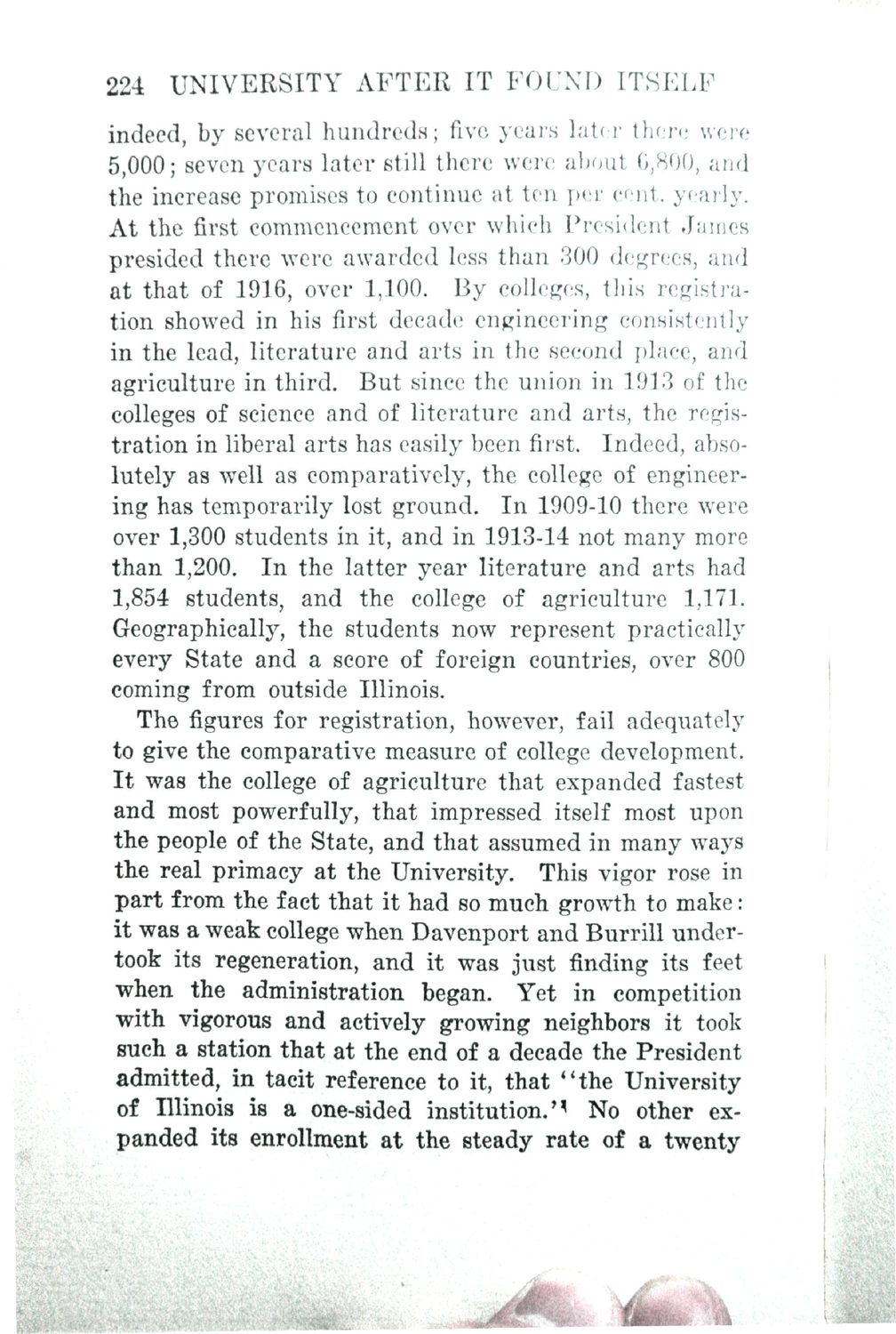| |
| |
Caption: Book - History of the University (Nevins)
This is a reduced-resolution page image for fast online browsing.

EXTRACTED TEXT FROM PAGE:
224 UNIVERSITY AFTER IT FOUND ITSELF indeed, by several hundreds; five years later there were 5,000; seven years later still there were about 6,800, and the increase promises to continue at ten per cent, yearly. At the first commencement over which President James presided there were awarded less than 300 degrees, and at that of 1916, over 1,100. By colleges, this registration showed in his first decade engineering consistently in the lead, literature and arts in the second place, and agriculture in third. But since the union in 1913 of the colleges of science and of literature and arts, the registration in liberal arts has easily been first. Indeed, absolutely as well as comparatively, the college of engineering has temporarily lost ground. In 1909-10 there were over 1,300 students in it, and in 1913-14 not many more than 1,200. In the latter year literature and arts had 1,854 students, and the college of agriculture 1,171. Geographically, the students now represent practically every State and a score of foreign countries, over 800 coming from outside Illinois. The figures for registration, however, fail adequately to give the comparative measure of college development. It was the college of agriculture that expanded fastest and most powerfully, that impressed itself most upon the people of the State, and that assumed in many ways the real primacy at the University. This vigor rose in part from the fact that it had so much growth to make: it was a weak college when Davenport and Burrill undertook its regeneration, and it was just finding its feet when the administration began. Yet in competition with vigorous and actively growing neighbors it took such a station that at the end of a decade the President admitted, in tacit reference to it, that "the University of Illinois is a one-sided institution.'* No other expanded its enrollment at the steady rate of a twenty
| |